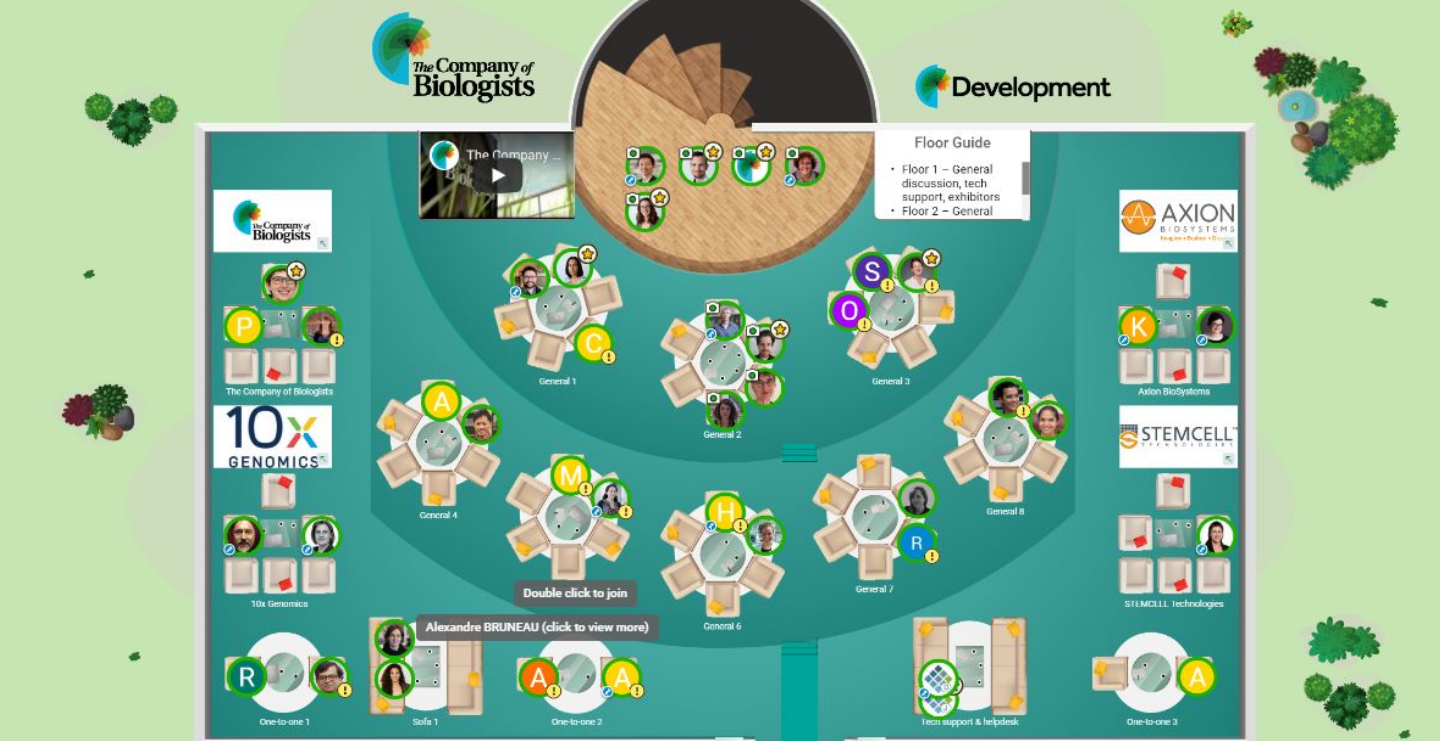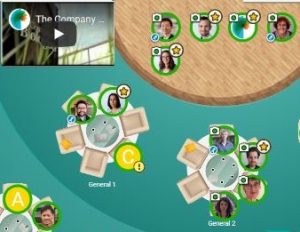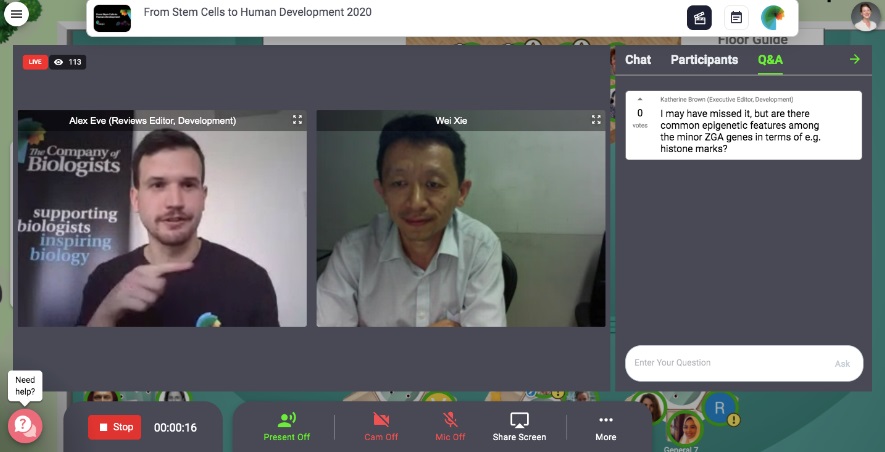
5 October 2020
The Company of Biologists is well known for its Meetings and Workshops, which gather biologists from around the world to share, learn and collaborate. When COVID-19 hit, the Events Team knew they would have to start planning virtual events. So what was it like to reconfigure a highly anticipated Meeting into a virtual format? We spoke to the organisers, speakers and delegates of the recent Development Meeting 2020: From Stem Cells to Human Development to get the full lowdown on the trials and tribulations of The Company of Biologists first virtual Meeting.
The format
Development Meetings are a highlight within the developmental biology community and are known for their excellent opportunities to network and interact. When reimagining the Meeting virtually, it was vital that these interactions were somehow recreated. “Our main issue was trying to recreate the discussions that are such an important part of the onsite Meeting that we usually run,” explained Frank O’Donnell, Meetings Organiser at the Company. “We wanted to create an event that delivered the talks effectively, but also allowed lots of opportunity for networking.”
With the Meeting scheduled for September, the Development team had the benefit of experience on their side, having attended online events themselves over the summer. Technological glitches, Zoom fatigue and a lack of informal discussion stood out as frequent sticking points. Remo, a virtual space comprised of interactive ‘tables’, was chosen to host the Meeting to help alleviate these issues. “We liked that we could customise Remo with our own branding and configure a layout that worked best for our needs,” said Frank. “For this event, we had nine ‘floors’, 1-to-1 tables, tables for group discussion and an area for our sponsors.”

The table format of Remo helped delegates recreate casual conversations. Delegates could use the search function to find a particular participant, or join an ongoing table discussion. “I was having a chat with someone I knew from Melbourne and we accidentally ended up in someone’s poster session,” laughed Brittany Croft, a postdoc currently working remotely in Melbourne, Australia, for Emma Rawlins’ lab at the Gurdon Institute, Cambridge. “We got to hear this great poster and it was actually quite like a normal conference when you bump into a new contact.” Dr Wei Xie from Tsinghua University, Beijing, also enjoyed this easy interaction. “When I first joined Remo, I was sent to a random table with people around me. I like it – I get to talk to strangers and it’s a pretty interactive environment, which is rare for virtual academic conferences.”
Alongside Remo, there was a dedicated Meeting website where delegates could find posters and talks, and a Slack channel for questions and discussion.
The speakers
To keep technical mishaps to a minimum, most talks were pre-recorded and then broadcast through Remo. Live Q&A sessions then followed, and at the end of each round of talks, speakers ‘sat’ at a table for delegates to find them for further discussion. All of the talks were then available to watch on catch-up. “Before my talk was shown, I arrived on stage and Alex Eve [Reviews Editor for Development] talked me through everything and explained how the Q&As would work,” explained Wei. “He was really helpful and it was the most relaxing talk I’ve ever given.” For the delegates, the pre-recorded talks were well received. “I was surprised at how smooth the pre-recorded talks were,” added Brittany.

Over the course of the Meeting, 40 speakers from around the world took to the ‘stage’ to share their research. Juggling time zones was important in the organisation, with the team hoping to keep the Meeting at a reasonable time for the majority of delegates. “Australian delegates were able to watch the morning sessions live by staying up late, and watched the afternoon on catch-up in the morning,” explained Katherine Brown, Executive Editor at Development. Even more importantly, the team ensured that all speakers could give their talk and take questions in the time zone that was most convenient for them.”
The verdict
“Preliminary feedback from the Meeting survey is that it’s the best platform people have used for a virtual meeting, said Katherine. Visit the Meeting hashtag on Twitter and this much is evident. “Having a virtual table psychologically made it feel like we were actually at a table,” said Wei. “Remo is going the right way – for the future, we need to somehow increase the atmosphere.” Claudio Cortes, from the Developmental Biology Institute of Marseilles, France, is in full agreement. “It’s been by far the smoothest virtual meeting that I’ve attended, and I think it serves as proof of principle for the power of virtual and mixed meetings,” he said.
While Remo facilitates slightly more spontaneous interactions, there is still work to be done. “Remo worked really well for allowing people to network where they wanted to,” said Katherine, “but quite a large proportion of people didn’t want to and were hiding away on the platform. We’ve talked about ways of encouraging networking in the future.”
It’s not just networking that is difficult to replicate virtually – exhibitors have a hard time too. Without the flow of people walking past, it’s tricky to initiate conversations. 10x Genomics, Axion, MaxWell Biosystems and STEMCELL Technologies joined us in using Remo for the first time and found it to be a valuable tool, with video chat and the option to share screens making initial contact much easier. Thank you to these sponsors for their support and lively engagement with the Meeting delegates.
The Development Meeting showed it is possible to capture elements of in-person events. The team even planned an informal social event one evening to make time for casual conversation away from the scheduled talks. “We can still get together virtually and have a really valuable week sharing ideas and listening to research,” said Frank. “COVID-19 has obviously forced our hands, but virtual events are an opportunity to host people who cannot normally attend our onsite Meetings. We want to reach out and support even more scientists worldwide.”
Virtual meetings are here to stay, so follow our five top tips to make sure you get the most out of them.








You must be logged in to post a comment.